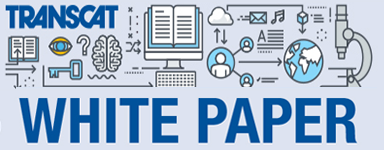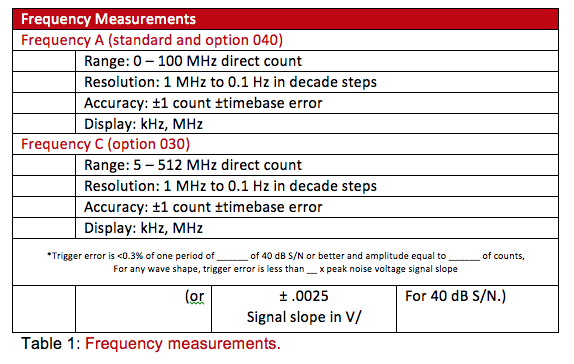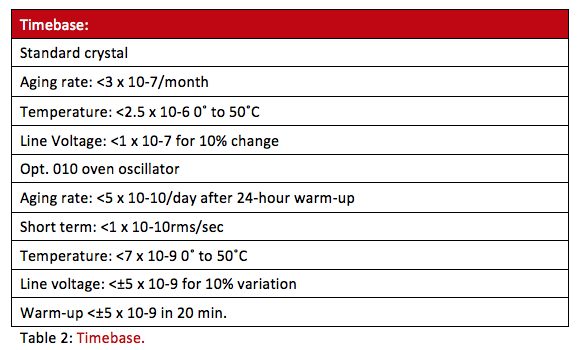Proper calibration ensures that your instruments are performing as expected, which saves you time, money, and protects your most important asset – your reputation.
Why should I care if my torque wrench or multimeter is calibrated? They're built to be rugged, and they're checked when they roll off the production line, so how far off could they be? Besides, I have a schedule to maintain, and I don't have time for this nuisance. It can't be that big of a deal.
If any or all of these statements represent your mindset, then it is apparent that instrument drift is not apparent to you. I have worked in the field of metrology the science of measurement – for more than 28 years. While my calibration and engineering experience has been evenly divided among military weapons systems, manned shuttle launches at the Kennedy Space Center, and pharmaceutical and medical device manufacturers, a consistent theme rings true of the wide variety of instrumentation and gages with which I have dealt: you simply cannot predict which instrument/gage is going to exceed its allowable tolerance limits and have a negative impact on the products or processes where it has been used over its most recent calibration cycle. So, regardless of the industry in which the instrument is being used, if you are dealing with an acceptance tolerance for a given process, you cannot afford to have a situation where you thought the measurement was good and found out later - that the instrument gave you a false indication. That can cause rework, scrapped product, or in the worst cases, product recall, injury, or fatality. We all hope that the processes in which instruments are being used to make qualifying decisions have enough “slop” in the acceptance tolerances to prevent these types of costly events from occurring, but history shows this is not always the case. And we shouldn't base safety and cost on a “hope" anyway, should we?
Dodging Gotchas
In the energy industry, there have been recent cases where improperly calibrated instruments have kicked off a series of events, leading to billions of dollars of property damage as well as the deaths of employees and contractors. The attitude of “we haven't had a problem yet so why worry about whether or not my calibrations are being done correctly?" is a very risky attitude to take, both in terms of safety and cost to your company.
The cost to have your calibrations done correctly – to ensure traceable measurement is preserved from the upper echelons of NIST through reference level calibration laboratories, to the standards that your calibration supplier uses to determine whether your equipment is good or bad, to the way you use those instruments in your processes – is often a fraction of the cost of a product recall, a lawsuit related to an accident, or to a faulty product or service. It's what is commonly referred to as the "cost of quality.” Any cost must also have a benefit, otherwise why spend the money? The benefit of calibrations done correctly is a reliable system of instrumentation that ensures decisions about the process or product are not incorrectly based on erroneous information, regardless of the instrument you pick up and use in the process.
Unfortunately, and you're not going to like this, but not all calibrations are performed correctly. At this point I must claim bias because I work for a commercial calibration provider and, of course, we want your business. We've thought through some not-so-evident scenarios and have designed our processes to catch and correct some problems so that you don't have to concern yourself with them causing problems in your processes. Allow me to remove myself from this business bias in order to point out the flaws that can become "gotchas"' in your attempt to preserve measurement assurance in your processes. Most companies that provide B2B calibration services are IS0-17025 accredited. At a minimum, this ISO standard covers some very important points that are critical to ensuring you get the calibration that you need. It also misses some important points, many of which most people assume are not a problem.
Sharing Expectations
Let's start with your expectation for the service you get when you pay for a calibration. Do you know what information you must convey to the calibration provider? Do you assume the calibration provider is the expert and no discussion is needed to convey your expectations? While they are the experts in calibration, they may miss some of these critically important points if you are not clear with each other. It's up to you to understand where these pitfalls can occur and how to avoid them. This concept follows the "buyer beware” approach to conducting business and making purchasing decisions.
Stop for a minute and think about your personal buying decisions. When you go to the drive-through at a fast food place, how mad are you when you get all the way home just to find out they gave you the wrong food, or forgot to put something in the bag when they handed it to you? Your expectation is likely that the person on the speaker should be capable of taking down your order and passing that through to the people cooking your food, and on to the people putting it together for you at the pickup window. How can this fairly simple process go so wrong?
Now, consider how much more complex a process it can be when placing your order for the calibration of an instrument. Or how about placing your order for the calibration of 50-100 instruments, or 1,000 instruments? To my knowledge, the largest quote my company has processed was for just over 10,000 instruments and, considering the varying calibration cycles on each one, the total quote was for about 18,000 calibrations per year. So what are the odds of getting that order l00 percent correct, and what are your expectations for each of these calibrations? The good news is that we have designed our systems to handle this variety and volume. The reality is that we still get some things wrong. But that is what disclaimers, as well as warranties, are for. Believe it or not, many prospective clients simply can't give us the information we need to make a decision about whether or not we have the capability to perform the calibration service, let alone the cost of the service
Accuracy Counts
It all starts with properly identifying your instruments with a valid manufacturer name and model number. In many cases other information is important, too, such as instrument range, accuracy, description, cal cycle, and next due date, etc. This information helps your calibration provider to identify the instrument, which points to the accuracy or tolerances against which the instrument will be calibrated. Without this information its a best guess, and hence the disclaimer. But for those instruments which can be clearly identified up front a warranty can come into play, if, for some reason, the calibration report does not provide the tolerances that you expected to see. If you regularly order calibration without data (certificate only), how can you possibly verify that what you expected is what you received? That would be like ordering a meal at the drive-through and not wanting the food, just taking the receipt. The substantial part of the order was the food, and the receipt simply shows that you paid for certain items. It’s pretty much the same with calibration: the substantial part of the order is the calibration report that shows the data on your instrument, not the calibration certificate that simply identifies your instrument. Dealing with calibration this way makes no sense whatsoever. In fact, ordering a calibration with the data and the lab's measurement uncertainties is all-encompassing in preserving measurement traceability and may soon be a requirement for all accredited laboratories (i.e., it may not be a choice for them to provide the lesser levels of service, because it breaks traceability).
Speaking of expected tolerances, do you know what tolerances the instrument should be tested against? Does your calibration provider know how to determine these? Likely you chose the particular instrument because the OEM published information telling you how it will perform (accuracy specifications) over a given timeframe (recommended cal cycle), and this met your needs (product/ process acceptance tolerances). So it stands to reason that your calibration provider should also check the instrument against these same OEM instrument tolerances. This is where the ISO standard is lacking. It states simply that the calibration provider must understand their client's needs and expectations. It can't possibly cover all of the tolerances and test points for the huge variety of instruments that require calibration. But if that conversation between the calibration provider and their client isn't explicit, the result could be that you are getting something that missed the mark on your expectations. How can that happen, you ask? Let me count the ways.
Try Troubleshooting
Incorrect Calibration Procedure: Some calibration service providers rely on military cal procedures to provide the step-by-step methodology for their technicians. The pitfall here is that military cal procedures have sometimes been written for their specific use where functions/ranges of an instrument are omitted, different test points are checked that may not provide a full calibration, and/or accuracy specifications have been changed for a specific purpose. If you wanted a calibration against the OEM tolerances and your instrument was calibrated using a military procedure, you may not be getting what you expected – and your calibration provider may be none the wiser that they are not delivering to your expectation. This may not be an intentional act on your calibration provider's part, but it certainly does not preserve your measurement traceability since you could be failing good product or passing bad product due to this miscommunication and/or lack of understanding.








